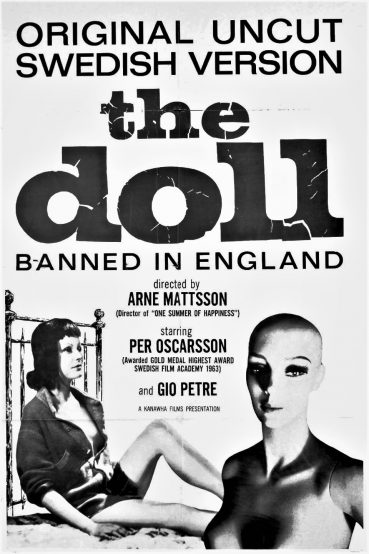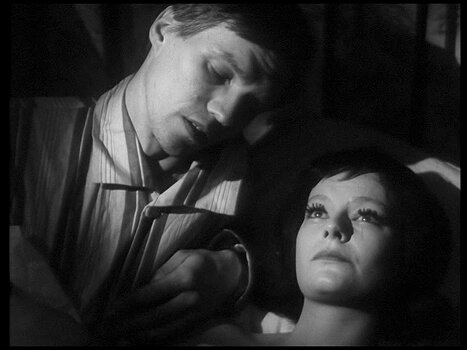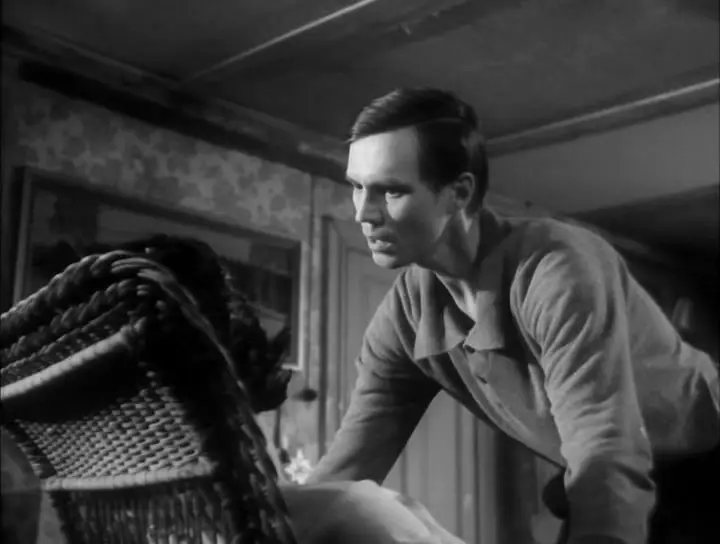 A most confounding 1962 masterwork from Sweden’s Arne Mattsson (1919–1995) about a man’s doomed love for a mannequin. Mattsson was one of Sweden’s most prolific and acclaimed filmmakers, yet he had a wild side, as evinced by controversial films like MANNEQUIN IN RED/MANNEKANG I ROTT (1958), WOMAN OF DARKNESS/ YNGSJOMORDE (1966) and THE GIRL (1987). THE DOLL (VAXDOCKAN), headlined by Sweden’s top interpreter of psychosis and villainy Per Oscarsson (1927–2010), is neither a horror thriller nor a sex film (although it was advertised as both) but, rather, a brooding art film whose true subjects are the corrosive effects of loneliness and thwarted love.
A most confounding 1962 masterwork from Sweden’s Arne Mattsson (1919–1995) about a man’s doomed love for a mannequin. Mattsson was one of Sweden’s most prolific and acclaimed filmmakers, yet he had a wild side, as evinced by controversial films like MANNEQUIN IN RED/MANNEKANG I ROTT (1958), WOMAN OF DARKNESS/ YNGSJOMORDE (1966) and THE GIRL (1987). THE DOLL (VAXDOCKAN), headlined by Sweden’s top interpreter of psychosis and villainy Per Oscarsson (1927–2010), is neither a horror thriller nor a sex film (although it was advertised as both) but, rather, a brooding art film whose true subjects are the corrosive effects of loneliness and thwarted love.
Mr. Lundgren is a lonely night watchman, living in a milieu in which it seems everyone has a significant other. One night in a department store Lundgren finds a collapsed female mannequin and impulsively smuggles it into his apartment. There Lundgren takes to treating the doll as a therapeutic sounding board to which he vents his anger and frustration.
This situation, however, gets a bit out of hand when the doll begins talking to him—and inevitably starts moving. As incarnated by actress Gio Petré, this humanized doll turns out to be quite a loving and devoted individual, although that devotion quickly grows suffocating. Worse, Lundgren’s landlord and fellow tenants grow suspicious of his behavior. This does nothing to help Lundgren’s deteriorating mental state—just the opposite, in fact.
 The film is suffused with a relentlessly dour aura very much in keeping with the Swedish filmmaking aesthetic, and the output of its most famous practitioner Ingmar Bergman. To that end it’s quite deliberate in terms of pacing and narrative development, visualized in noirish black and white photography (seemingly every shot is crisscrossed by shadows) and heavily foregrounded, claustrophobic visual compositions that ooze apprehension and unease.
The film is suffused with a relentlessly dour aura very much in keeping with the Swedish filmmaking aesthetic, and the output of its most famous practitioner Ingmar Bergman. To that end it’s quite deliberate in terms of pacing and narrative development, visualized in noirish black and white photography (seemingly every shot is crisscrossed by shadows) and heavily foregrounded, claustrophobic visual compositions that ooze apprehension and unease.
The effect is lessened somewhat by the conventions of the time. These are evident in the frequent intercutting between Lundgren’s personal drama and that of the other tenants (a more insular REPULSION-esque treatment would have better served the material), and eroticism expressed in chaste shots of leg rubbing and some very discreet nudity (a specialty of Swedish films of the 1950s and 60s).
Yet ultimately THE DOLL resolves itself into an impacting spectacle whose major virtues are not the filmmaking (impressive though it is) but the performances of Mr. Oscarsson and Ms. Petré. The latter in particular succeeds in creating a superbly rounded, though appropriately doll-like, character, which renders an extremely downbeat film even more so.

Vital Statistics
THE DOLL (VAXDOCKAN)
Florafilm
Director: Arne Mattsson
Producer: Lorens Marmstedt
Screenplay: Lard Forsell, Eva Seeberg
Cinematography: Åke Dahlqvist
Editing: Ingemar Ejve
Cast: Per Oscarsson, Gio Petré, Tor Isedal, Elsa Prawitz, Bengt Eklund, Marie-Louise Nordgren, Dagmar Olsson, Mimi Nelson, Rick Axberg, Elisabeth Odén, Olle Grönstedt, Agneta Prytz, Lennart Norbäck, Mia Nyström, Mona Andersson
